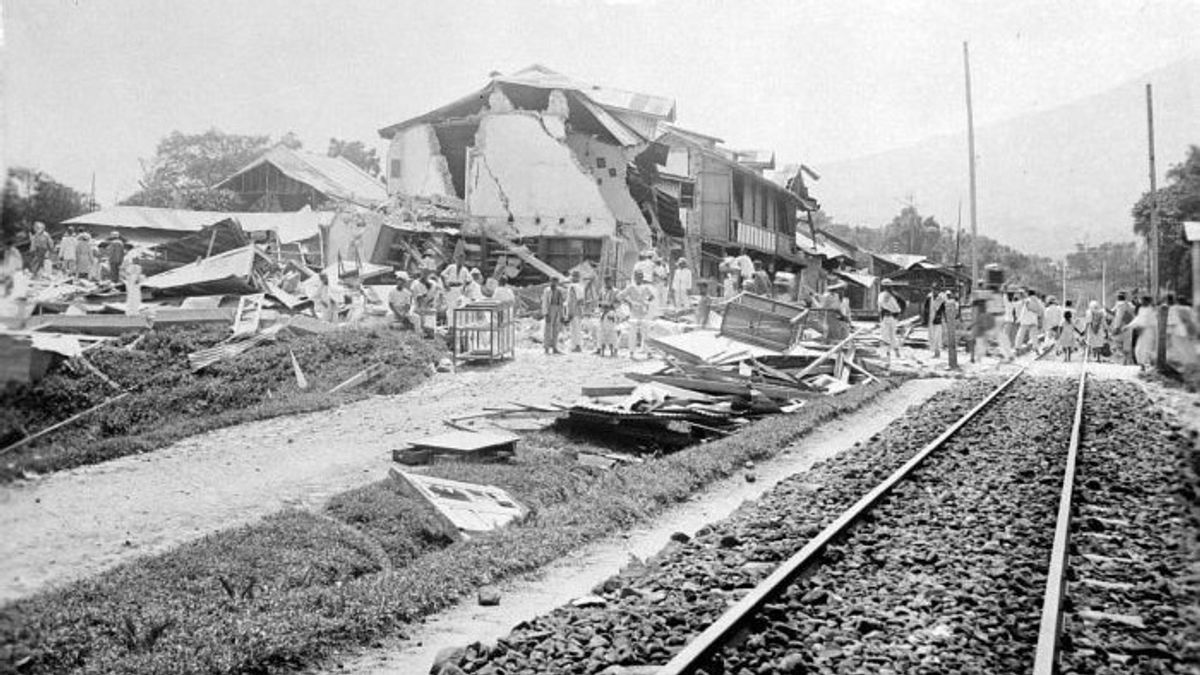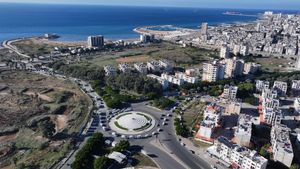JAKARTA - The earthquake is a natural disaster. Earthquake is a trial from the almighty. Earthquake is a sign of doomsday. These three narratives commonly appear when an earthquake hits the land of the Emerald Equator. Even so long ago. The 1926 Padang Panjang earthquake, for example, was not only considered a disaster but also a warning from God for people to repent. More than that, earthquakes are also seen as markers of the end of time: doomsday.
In its history, the June 28, 1926 earthquake was the largest in the history of the Dutch colonial occupation of West Sumatra. The earthquake which is centered in Padang Panjang is known to have occurred many times.
Based on National Oceanic Atmospheric Administration (NOAA) data, two of the earthquakes recorded large tremors. The earthquake at 10.00 am measuring 7.6 SR. Meanwhile, the earthquake at 13:15 pm was stronger, reaching 7.8 on the Richter scale.
For this reason, the earthquake which coincided with the Padang Panjang week - a market day that is held twice a week: Monday and Friday - is remembered in Minangkabau memory, at least to this day.

Story of Mass Penance During the 1926 Padang Panjang Earthquake
Before the earthquake, Minangkabau people were very much involved in their daily activities. The sellers offer their wares, buyers are busy looking for groceries, government employees are busy with their work. There were also those who were immersed in casual chatter in the shops.
However, the earthquake then occurred at 10:00 am. Sin Po Newspaper reported, July 9, 1926, not only Padang Panjang felt the tremors. The quake was also felt by the Minangkabau people around Lake Singkarak, Bukittinggi, Lake Maninjau, Solok, Sawahlunto, and Alahan Panjang.
As a result of the earthquake, 354 people lost their lives and 2,383 houses collapsed. Plus the aftershocks that killed 57 people, and collapsed 472 houses. “The shaking was long enough. Instantly, many buildings collapsed and destroyed. Many of the ruins of the buildings were trapped and crushed, ”wrote Koran Sin Po.
A news report dated July 3, 1926 which reported an earthquake measuring 7.6 on the Richter scale that devastated Padang Panjang on June 28, 1926. As a result of this earthquake, it was estimated that 354 people were killed and 2,383 houses collapsed.📽️ By British Pathe pic.twitter.com/tWbGiHVDJe
- Mazzini (@mazzini_gsp) November 16, 2020
The tremors caused damage to infrastructure. Especially in buildings made of stone that have collapsed a lot. One of the buildings affected is the Bukittinggi icon, the Clock Tower. Even though it was still under construction, the Jam Gadang had swayed violently so that the construction tilted 30 degrees.
"During the big earthquake of 1926, this clock shook violently and tilted 30 degrees. Then it is repaired to its original state. The building height is about 37 meters. But because it is located on a hill, it looks very high, especially when viewed from the surrounding valleys. At the top there is a rumah gadang building with a roof in the shape of a buffalo horn. To reach the top, there is a ladder, ”explained in a report in Tempo Magazine entitled Jam Gadang Will Be Commercialized (1978).
Mass repentance and apocalypse marker
The momentum of the 1926 earthquake was recorded in the memory of a historical witness and senior journalist, Muhamad Radjab. Radjab, who has lived in the area around Lake Singkarak since he was a child, has recorded this grieving incident in his autobiography entitled Semasa Kecil di Kampung (1950).
In the book, Radjab, who is familiarly called Rizal, said that there were not as many casualties in his residence as in Padang Panjang. However, the people in his village think that the earthquake is a sign of doomsday.
"We do not even trust. The world will end in a few days. Many humans are already bad, that's why God punished him, ”said the local religious leader and Rizal's father shortly after feeling the tremors of the earthquake.
Instantly, the people in Rizal village seemed to be perpetuating the mass repentance. From those who never made dhikr of tauhid 'La Ilaha Illallah,' so they kept on doing dhikr. And from previously rarely worshiping, he often visits places of worship.
Radjab who was still a teenager did not escape to immediately apologize for minor sins such as stealing fruit. In particular, apologies are extended to the owners of the rambutan, duku, mango and cempedak trees.
"Everyone praying, male and female, no exception. In the markets, the white cloth for women's telekung and the Silungkang woven cloth is actually sold. In short, all over Minangkabau people are increasingly devouting worship. In a state of danger everyone remembers God, ”said Rizal.
Fortunately, over time people became accustomed to earthquakes because aftershocks occurred for months. In the end, the world that would end, as predicted by many people in his village, did not happen. People started to stop praying. The surau (small mosque), which was very busy after the big earthquake, is now starting as usual. Those who are diligent and obedient come every day.
"Ordinary conditions gradually returned, and the predicted doomsday world, did not happen. People began to stop praying a lot. The surau, which was very busy during the earthquake, is now starting to be normal. Those who are diligent and obedient come every day. Again, minor sins, such as playing cards, fighting cocks, and gossiping about others. Previously, during the earthquake, everyone lived a holy life like an angel, ”concluded Rizal.
The English, Chinese, Japanese, Arabic, and French versions are automatically generated by the AI. So there may still be inaccuracies in translating, please always see Indonesian as our main language. (system supported by DigitalSiber.id)









